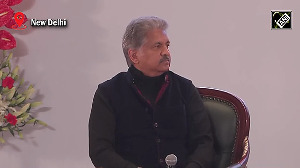 Airlines global body IATA on Thursday voiced concern over the high tax regime affecting the airline industry and said it hampered air travel demand and at times violated international conventions.
Airlines global body IATA on Thursday voiced concern over the high tax regime affecting the airline industry and said it hampered air travel demand and at times violated international conventions.
"Airlines, like all companies, pay taxes. And air travellers pay taxes as well. But often times the taxes are excessive or in contravention of international convention-or both," International Air Transport Association Director General and Chief Executive Tony Tyler said addressing the global media on the IATA Global Media Day in Geneva.
They (higher taxes) dampen travel demand and that is bad for the airlines and more importantly for the local economy, he said.
High taxes on the jet fuel, which goes up as high as 40 per cent in some states, coupled with higher airport charges in the form of user development and airport development fee, which have cascading effect on the air fares, have had a negative impact on the domestic passenger demand in India.
The government's recent move to handover six airports including Chennai and Kolkata to private players for operation and management is being opposed by the national airports unions on the ground that the decision will lead to higher airport charges for the passengers.
Citing the example of Ireland where the government has decided to abolish the air travel tax from April next year, Tyler said in 2008, the year before the tax was introduced, Ireland had just over 30 million travellers. By 2013, it had dropped to 23.5 million.
Stating that although not all of this decline in passenger number was due to air travel tax, the IATA official said, "But certainly some of it is.
“And the government decision to abolish the tax was in anticipation of greater economic gains from increased air traffic volumes."
Expressing concern over governments not understanding the value which aviation can contribute in the economic growth of a country, Tyler said in Africa, taxes, fees and lack of transparency are major contributor to making jet fuel costs in Africa on an average 21.5 per cent more expensive than the global average.
The image is used for representational purpose only












 © 2025
© 2025